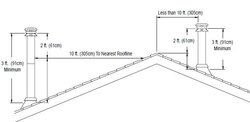Hey all,
So some manuals specify that minimum chimney length is X length measured from the bottom of the stove to the top of the chimney. Others don't specify but to say minimum chimney length is X. Is it general knowledge that you measure the minimum length from the bottom of the stove to the top of the chimney or does it differ with manufacturer?
Thanks,
So some manuals specify that minimum chimney length is X length measured from the bottom of the stove to the top of the chimney. Others don't specify but to say minimum chimney length is X. Is it general knowledge that you measure the minimum length from the bottom of the stove to the top of the chimney or does it differ with manufacturer?
Thanks,


